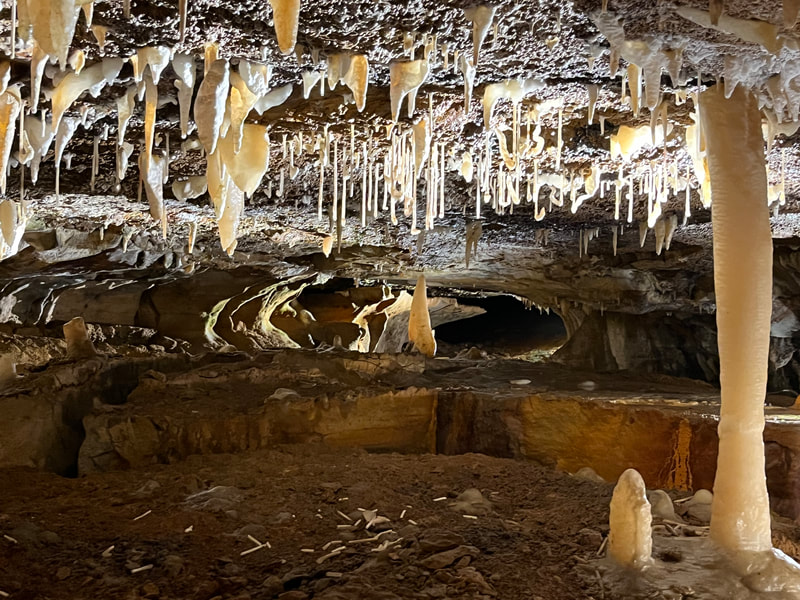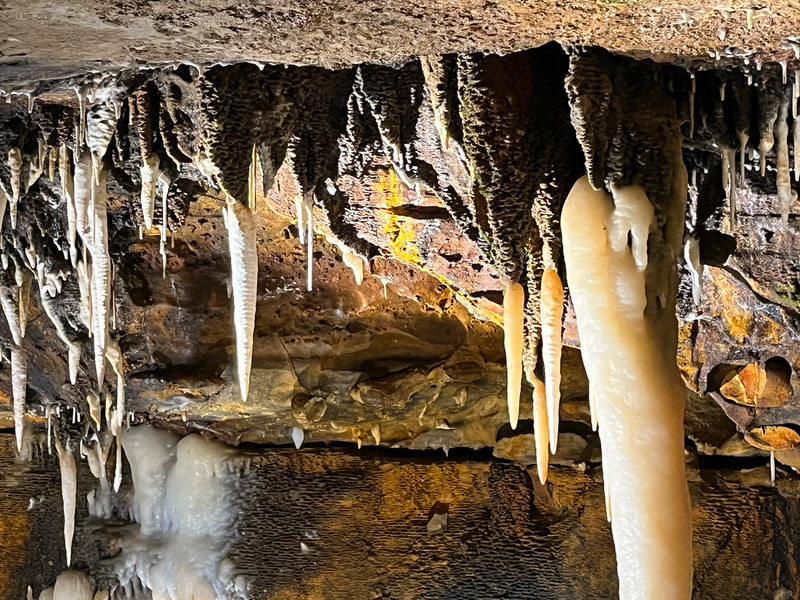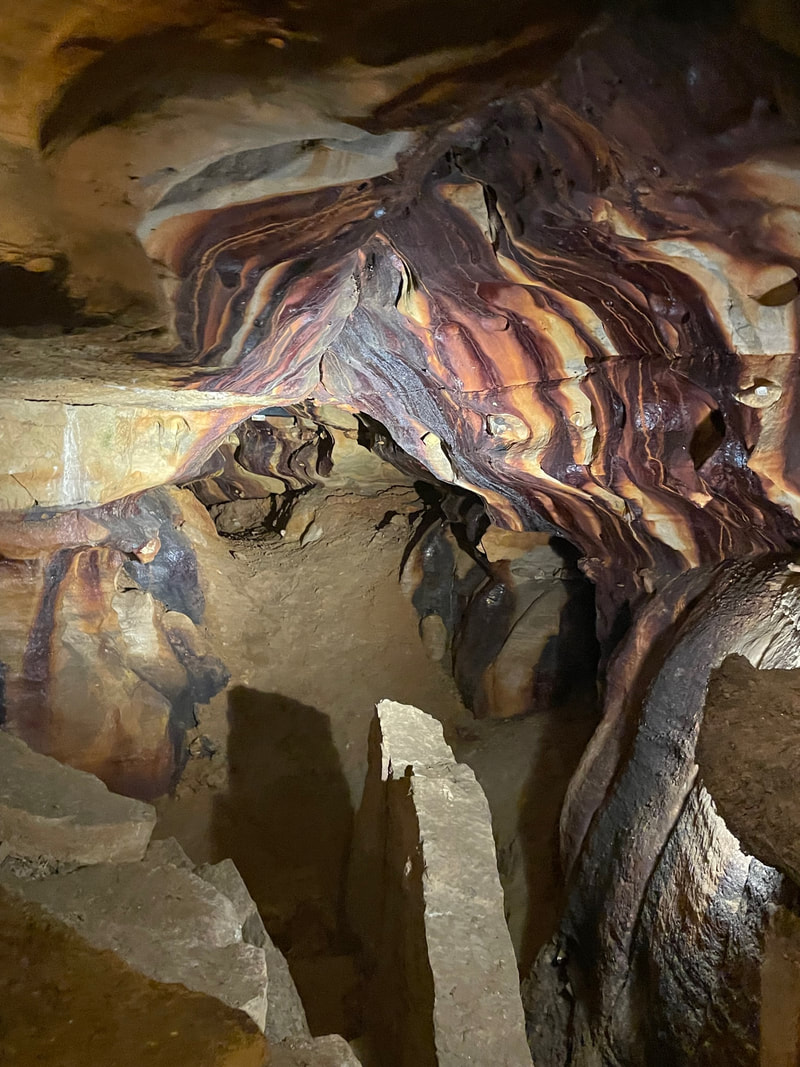This
Dimensions Several passages extend linearly for hundreds of feet/meters, and the total length of passages is about a mile (1.6 kilometers).
Key Details
- The cave mainly consists of a few long, very straight passages intersecting each other at odd angles, like scattered matchsticks. These passages are quite narrow, especially at foot level, requiring explorers to proceed single-file.
- In some spots there are short branch passages connecting to other nearby main passages, or ending in plugs of dried cave mud. The corners leading into these branches are very sharp, making a side passage difficult to notice until a person is right next to it. A few inches of water covers the floor in some side passages.

- The
The
Story Elements
- Characters can move throughout this array of passages without need to climb up or down; the mud floors are quite level. However, there are rare spots where a side passage ends in a pit leading further down into the bedrock. This opens the possibility of further exploration into spaces with deep water or other challenges. A pit might also be an emergency hiding spot, or source of a new threat rising into the main passages.

- On
Reference Location
Ohio Caverns, in west-central Ohio. This commercially operated cave is open throughout the year, excepting some holidays. Most of the areas featured in this article can be seen on the Winter Tour or the summer Natural Wonders tour.
© Rice-Snows 2024
Proudly powered by Weebly













